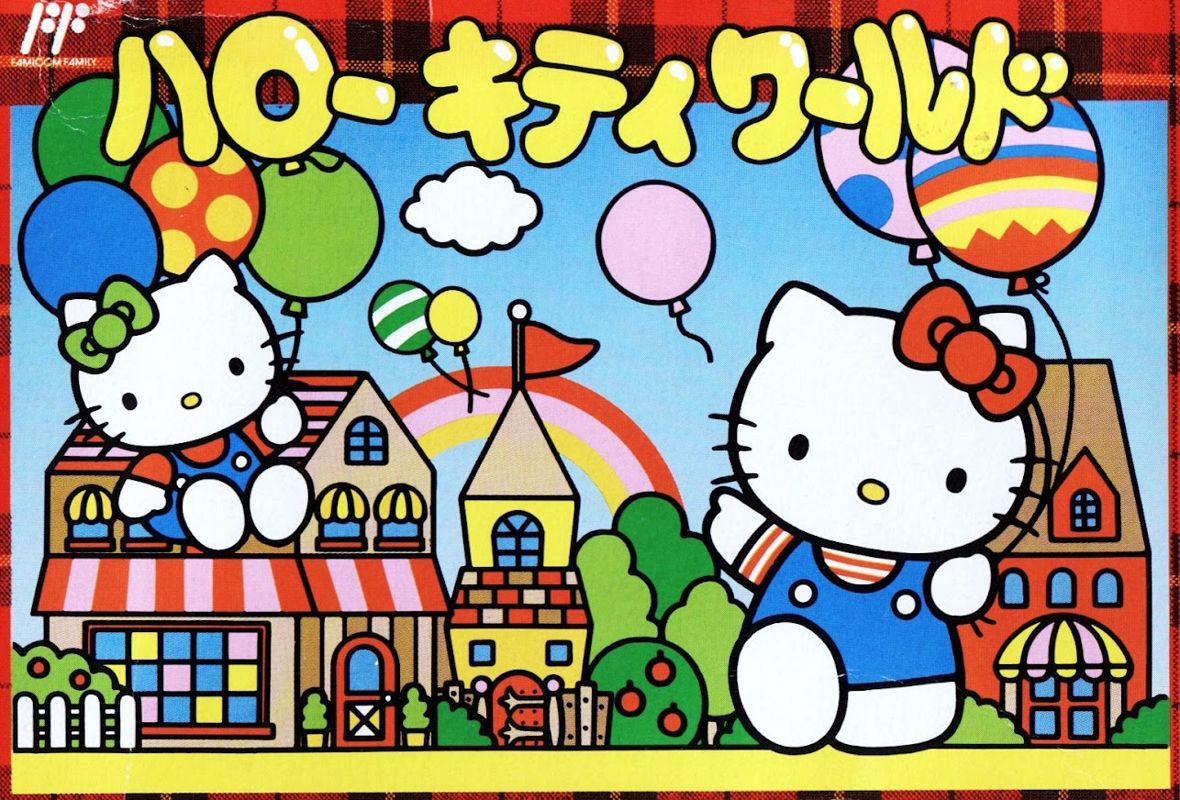4 min to read
Hello Kitty World
Hello Kitty World is a 1992 platformer featuring Hello Kitty in a hot-air balloon adventure, originally a reskin of Balloon Kid for the NES.

The following is the official NES Japan retail version of the game.
About the game
Hello Kitty World is a platform video game released in 1992 exclusively for the Famicom (the Japanese version of the NES). The game was developed by Nintendo and licensed to Character Soft, a subsidiary of Sanrio, the company famous for creating the iconic Hello Kitty character. This game serves as a direct reskin of Balloon Kid, an earlier Nintendo title for the Game Boy, with the gameplay largely unchanged but given a thorough Hello Kitty-themed makeover. While Balloon Kid was released internationally on Nintendo’s handheld system, Hello Kitty World was never released outside Japan, making it a rare gem for Famicom enthusiasts and fans of Sanrio characters.
At its core, Hello Kitty World is a side-scrolling platformer where the player takes control of Hello Kitty as she embarks on a quest to rescue her sister Mimmy, who has drifted away on a bunch of balloons. Mimmy is trapped in a perilous world of floating platforms, hazards, and obstacles, and Hello Kitty must navigate through increasingly difficult levels to save her sibling. The game draws heavy influence from Nintendo’s earlier arcade hit Balloon Fight, sharing similar mechanics with an added platforming element.
The player begins each level with Hello Kitty holding onto two balloons that allow her to float through the air, controlling her movement with careful balance between staying airborne and descending onto platforms. The primary goal is to collect balloons scattered throughout the stages while avoiding environmental hazards like spikes, enemies, and other obstacles that can pop her balloons. If both balloons are popped, Hello Kitty falls to the ground, and the player must navigate on foot until they can inflate more balloons, which is critical to progressing through many of the game’s aerial sections. The platforming aspect adds depth and strategy as players alternate between floating and walking, with tight controls and momentum-based mechanics that were a hallmark of Balloon Kid.
The game features a series of stages, each becoming more challenging as Hello Kitty ventures further into the dangerous balloon-filled world. Each level culminates in a boss fight, and these encounters add variety to the otherwise methodical pacing of floating and collecting balloons. Players must learn to adapt to different enemy patterns while maintaining control over Hello Kitty’s flight, which can be tricky given the game’s physics-based flight mechanics.
One of the most notable aspects of Hello Kitty World is its charming visual presentation. As a Sanrio-licensed title, the game’s aesthetic was reworked from the more generic art style of Balloon Kid into a vibrant, pastel-colored world filled with characters and imagery that align with Hello Kitty’s universe. Hello Kitty herself is rendered in a recognizable, cutesy pixel art style, and the backgrounds and enemies take on the friendly, rounded forms often associated with Sanrio designs. The game’s color palette is light and cheerful, perfectly complementing the whimsical tone of the Hello Kitty franchise. The music, while not directly taken from Balloon Kid, is also updated with new tracks that better suit the Hello Kitty world, creating a delightful and upbeat soundscape that matches the visuals.
While the gameplay mechanics were not innovative for the time, being a reskin of Balloon Kid, Hello Kitty World found a dedicated audience due to its licensed characters and charming presentation. The game appealed primarily to young players and fans of Sanrio’s expansive character lineup, though it also attracted hardcore platformer fans due to its challenging gameplay. Despite its relatively simple premise, the game’s increasing difficulty curve and precision-based mechanics kept players engaged, making it more than just a “kids’ game.”
Although Hello Kitty World never saw an official release outside Japan, the game became known internationally among retro gaming communities. Fans of Balloon Kid often seek out the Famicom version due to its more colorful and detailed graphics, and the game’s status as a Sanrio-licensed title has made it a collector’s item in the world of Famicom games. In recent years, with the increasing accessibility of ROMs and emulation, more players outside Japan have had the opportunity to experience the game, contributing to its growing reputation as a beloved, if obscure, entry in both the Sanrio and Nintendo catalogs.
In conclusion, Hello Kitty World stands as an interesting historical footnote in the NES/Famicom era of gaming. While it may not have the international recognition of other Nintendo platformers, its combination of charming Hello Kitty aesthetics and solid, if somewhat familiar, platforming mechanics make it a unique title that is worth exploring, especially for fans of either Sanrio characters or classic Nintendo gameplay. The game’s exclusivity to Japan has only added to its mystique, cementing its place as a cult favorite in the annals of retro gaming.
Resources
- Cover image credits: https://www.mobygames.com/game/5285/balloon-kid/cover/group-91969/cover-251113/